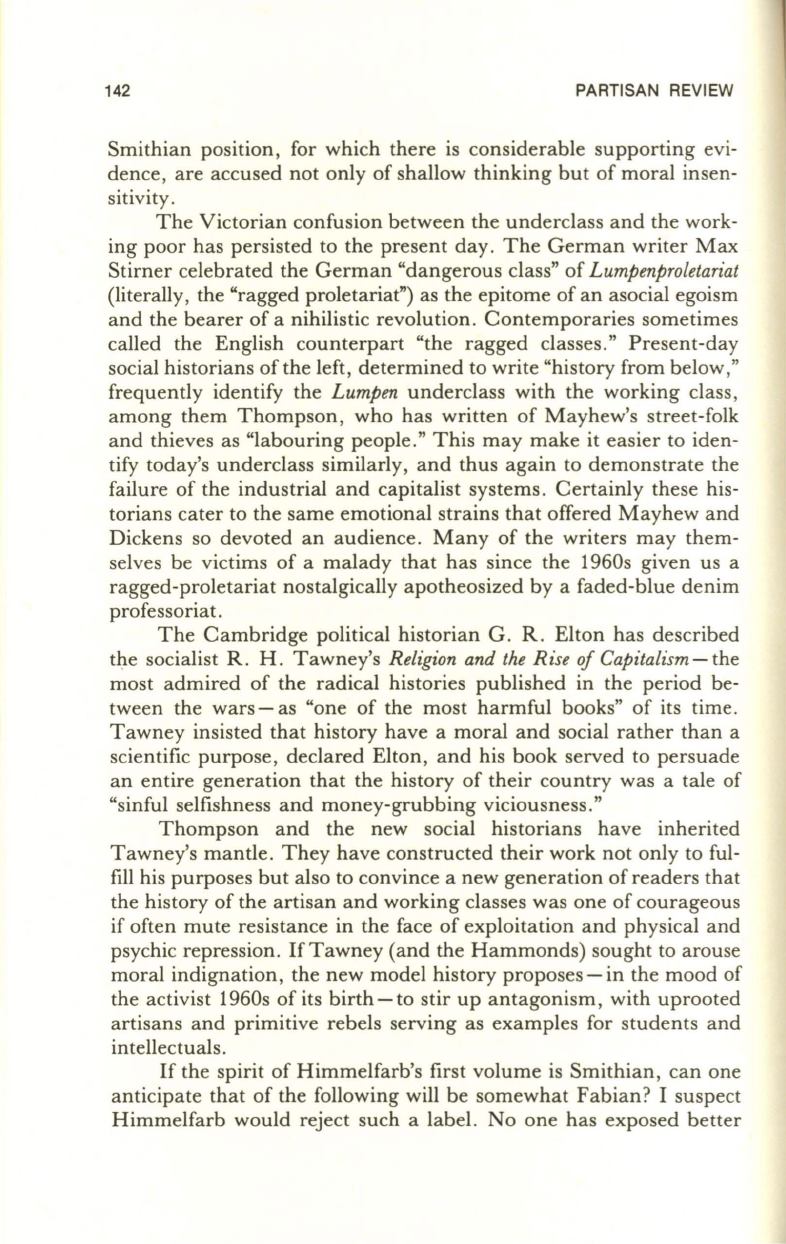
142
PARTISAN REVIEW
Smithian position, for which there is considerable supporting evi–
dence, are accused not only of shallow thinking but of moral insen–
sitivity .
The Victorian confusion between the underclass and the work–
ing poor has persisted to the present day . The German writer Max
Stirner celebrated the German "dangerous class" of
Lumpenproletariat
(literally, the "ragged proletariat") as the epitome of an asocial egoism
and the bearer of a nihilistic revolution . Contemporaries sometimes
called the English counterpart "the ragged classes." Present-day
social historians of the left, determined to write "history from below,"
frequently identify the
Lumpen
underclass with the working class ,
among them Thompson, who has written of Mayhew's street-folk
and thieves as "labouring people ." This may make it easier to iden–
tify today's underclass similarly, and thus again to demonstrate the
failure of the industrial and capitalist systems. Certainly these his–
torians cater to the same emotional strains that offered Mayhew and
Dickens so devoted an audience. Many of the writers may them–
selves be victims of a malady that has since the 1960s given us a
ragged-proletariat nostalgically apotheosized by a faded-blue denim
professoriat.
The Cambridge political historian G. R. Elton has described
tl,le socialist R. H. Tawney's
Religion and the Rise of Capitalism
-
the
most admired of the radical histories published in the period be–
tween the wars - as "one of the most harmful books" of its time.
Tawney insisted that history have a moral and social rather than a
scientific purpose, declared Elton, and his book served to persuade
an entire generation that the history of their country was a tale of
"sinful selfishness and money-grubbing viciousness."
Thompson and the new social historians have inherited
Tawney's mantle. They have constructed their work not only to ful–
fill his purposes but also to convince a new generation of readers that
the history of the artisan and working classes was one of courageous
if often mute resistance in the face of exploitation and physical and
psychic repression .
If
Tawney (and the Hammonds) sought to arouse
moral indignation, the new model history proposes - in the mood of
the activist 1960s of its birth - to stir up antagonism, with uprooted
artisans and primitive rebels serving as examples for students and
intellectuals .
If
the spirit of Himmelfarb's first volume is Smithian , can one
anticipate that of the following will be somewhat Fabian? I suspect
Himmelfarb would reject such a label. No one has exposed better


